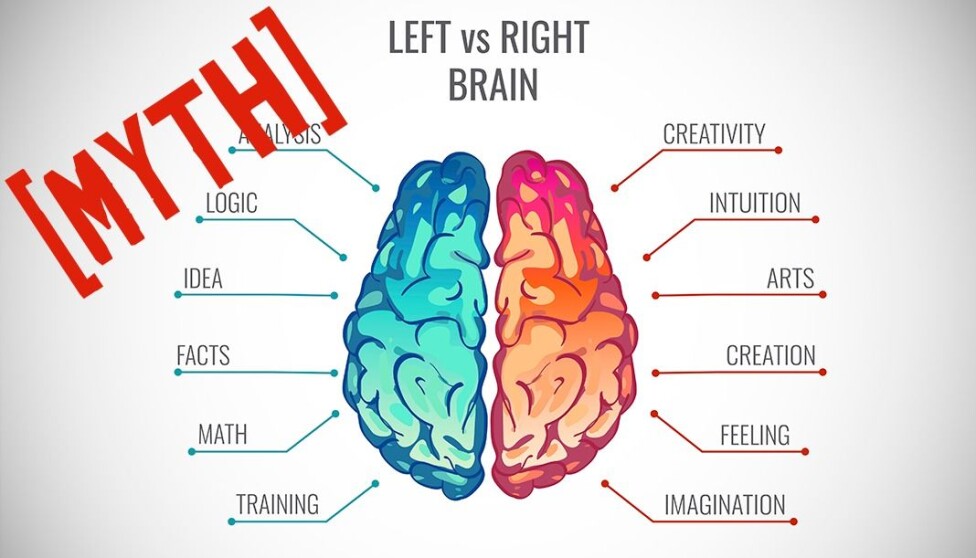Researchers' Zone:

Myth: The left and the right brain hemisphere are fundamentally different
The differences between right vs. left brain have been blown completely out of proportion.
Who has not seen – or done – one of countless online-personality tests that divide people in right-hemisphere dominant or left-hemisphere dominant personality types?
They are ever so present during cooperate team building, a job application or simply on Facebook.
The idea behind these tests is that the two different halves of the brain govern fundamentally different abilities: the left hemisphere is logical and detail oriented while the right hemisphere is creative and emotional.
As many other myths, this one also has its root in oversimplification and exaggeration of real experimental results: Since the 1860s, we have known that damage to the left hemisphere of the brain effects language to a far greater amount than damage to the right hemisphere.
While the left language-dominance is certainly true in most cases and other asymmetries – for example in spatial attention, also exist – the idea of distinct left- and right-brain function has been blown out of proportion in popular culture.
This has led to the caricatured believe that creativity, logic and other complex cognitive abilities can be reduced to one of the two hemispheres and that different personal preferences are rooted in the imbalance between the two sides.
More similarities than differences
The primary division of labor between hemispheres is in the sensory and motor domain.
The right hemisphere controls the left side of the body and the left hemisphere controls the right side of the body.
Except for this type of basic sensory-motor separation, the two sides of the brain are much more similar to each other than they are different.
We know from neuroimaging and other neuroscientific methods that both sides participate in most tasks, especially complex ones involving creativity and logic.
Additionally, experimental studies have failed to characterize people into sub-groups according to a dominance of left- or right-sided brain networks (see here).
This suggests that there is no real evidence that this factor influences personality of personal preference for specific types of cognitive tasks.
Risk of self-fulfilling prophecies
The ‘left-brain’ vs. ‘right-brain’ myth remains harmless as long as these tests are used for amusement or serve as a motivation to work on ones weaker ‘side’/abilities.
However, there is a risk that these types of tests become self-fulfilling prophecies:
Having learned that there is a biological ‘reason’ for not being good at math may make someone abandon the discipline altogether because of a false assumption that their brains are not biologically equipped for this task.
In fact, it may actively harm their performance. Many studies show that creating or reproducing negative stereotypes about a person’s abilities can undermine their performance significantly.
So the bottom line is that we all are all ‘whole-brained’ and do not dominantly rely on one or the other hemisphere.
Source







